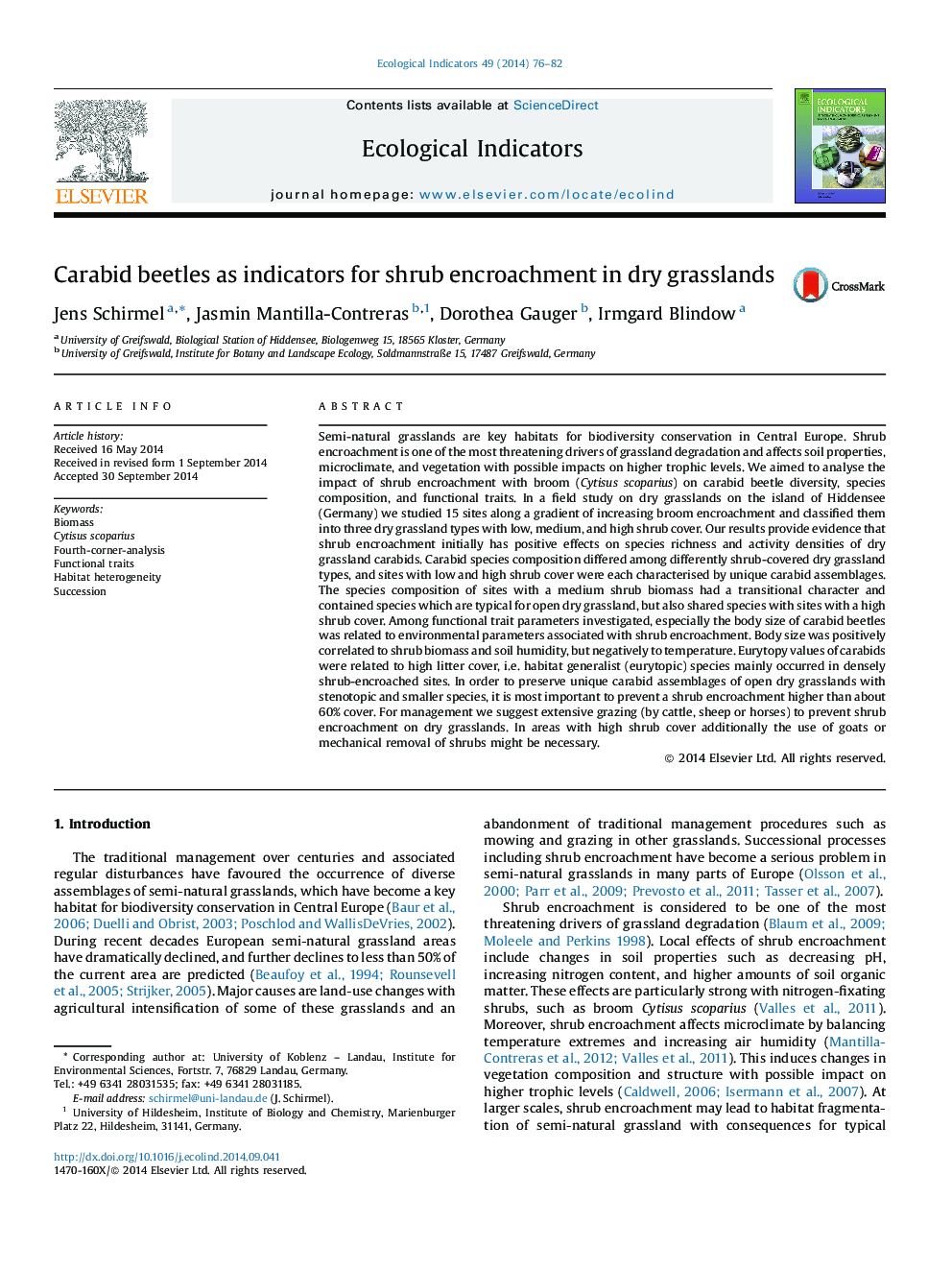| Article ID | Journal | Published Year | Pages | File Type |
|---|---|---|---|---|
| 6294785 | Ecological Indicators | 2015 | 7 Pages |
Abstract
Semi-natural grasslands are key habitats for biodiversity conservation in Central Europe. Shrub encroachment is one of the most threatening drivers of grassland degradation and affects soil properties, microclimate, and vegetation with possible impacts on higher trophic levels. We aimed to analyse the impact of shrub encroachment with broom (Cytisus scoparius) on carabid beetle diversity, species composition, and functional traits. In a field study on dry grasslands on the island of Hiddensee (Germany) we studied 15 sites along a gradient of increasing broom encroachment and classified them into three dry grassland types with low, medium, and high shrub cover. Our results provide evidence that shrub encroachment initially has positive effects on species richness and activity densities of dry grassland carabids. Carabid species composition differed among differently shrub-covered dry grassland types, and sites with low and high shrub cover were each characterised by unique carabid assemblages. The species composition of sites with a medium shrub biomass had a transitional character and contained species which are typical for open dry grassland, but also shared species with sites with a high shrub cover. Among functional trait parameters investigated, especially the body size of carabid beetles was related to environmental parameters associated with shrub encroachment. Body size was positively correlated to shrub biomass and soil humidity, but negatively to temperature. Eurytopy values of carabids were related to high litter cover, i.e. habitat generalist (eurytopic) species mainly occurred in densely shrub-encroached sites. In order to preserve unique carabid assemblages of open dry grasslands with stenotopic and smaller species, it is most important to prevent a shrub encroachment higher than about 60% cover. For management we suggest extensive grazing (by cattle, sheep or horses) to prevent shrub encroachment on dry grasslands. In areas with high shrub cover additionally the use of goats or mechanical removal of shrubs might be necessary.
Related Topics
Life Sciences
Agricultural and Biological Sciences
Ecology, Evolution, Behavior and Systematics
Authors
Jens Schirmel, Jasmin Mantilla-Contreras, Dorothea Gauger, Irmgard Blindow,
